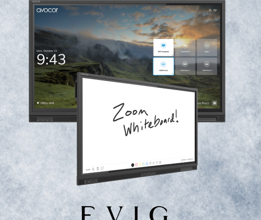Co-Managed IT vs. Fully Outsourced IT: What’s Right for Your Business?

Choosing the right IT support model can significantly impact your business’s efficiency, security, and growth potential. For many companies, tiny to mid-sized businesses, the decision often boils down to two main options: co-managed IT or fully outsourced IT. Both models have their strengths and cater to different needs based on your internal resources, goals, and growth stage.
If you already have an in-house IT team but find them overwhelmed or lacking specific specialized skills, co-managed IT can provide the additional support and expertise you need to stay ahead. Conversely, if managing IT falls outside your core operations or becomes a distraction, fully outsourced IT may be the comprehensive solution you’re seeking. So, which option is right for you? That’s precisely what we aim to clarify. Interact with the IT Consulting New York experts to determine whether co-managed or fully outsourced IT is the right fit for your business goals and growth strategy.
In this blog, we will explore co-managed and fully outsourced IT and key differences and guide you in choosing the best fit for your business.
What is Co-Managed IT?
Co-managed IT is a partnership where your internal IT team works together with an outside managed service provider (MSP). This setup allows you to keep control over your IT environment while gaining access to additional expertise, tools, and support. It’s ideal for businesses that have some in-house capabilities but need help managing workloads, handling complex projects, or scaling operations without hiring additional staff.
What is Fully Outsourced IT?
A fully outsourced IT service model involves a third-party provider taking charge of every element of your company’s IT infrastructure. From helpdesk support and cybersecurity to network monitoring and strategic planning, the provider acts as your entire IT department. This approach is ideal for businesses without in-house IT staff or those looking to reduce overhead, streamline operations, and rely on expert guidance for all technology needs.
See also: Smart Home Technology and Its Influence on Property Value
8 Key Differences Between Co-Managed IT and Fully Outsourced IT
- Team Structure and Responsibility
In a co-managed IT setup, your internal IT team shares responsibilities with an outside IT provider. This model enables your staff to handle day-to-day operations and business-specific tasks while the provider provides specialized expertise, support for projects, or handles overflow work. It’s a flexible approach that strengthens your team without replacing them.
On the other hand, a fully outsourced IT model means the provider takes full responsibility for your entire IT environment. There’s no internal team needed; they handle everything from support to strategy. This is ideal for businesses that lack in-house IT resources or prefer to focus on their core operations.
- Level of Control
With co-managed IT, your business maintains direct control over key systems, tools, and decision-making processes. Your internal team remains involved in daily operations while the external provider steps in to support specific areas. This balance allows you to stay hands-on while benefiting from expert guidance and additional support when needed.
In contrast, fully outsourced IT transfers most control to the service provider. They manage your entire IT environment, make technical decisions, and maintain systems without daily input from your team. This hands-off approach is ideal if you prefer to focus on running your business rather than managing technology.
- Cost Structure
In a co-managed IT model, you maintain your internal IT staff while also paying for external support. This dual setup can lead to higher overall costs, but it offers flexibility, allowing you to bring in help only when and where it’s needed. It’s a practical solution for businesses seeking to enhance their IT infrastructure without fully outsourcing.
On the other hand, fully outsourced IT typically runs on a fixed monthly rate, covering everything from support to infrastructure management. Since there’s no need to hire or maintain an internal team, it often proves more budget-friendly for companies that want simplicity and cost predictability.
- Scalability and Flexibility
A co-managed IT setup allows you to scale support as your business needs change. You can bring in external help during busy periods, special projects, or when your internal team lacks specific skills. This model provides the flexibility to adapt without hiring additional full-time staff, making it a cost-effective way to remain agile.
In contrast, fully outsourced IT offers even greater scalability. Your provider can quickly expand services, onboard new users, or adjust to changing tech demands without delays. It’s a strong choice for businesses expecting fast growth or needing complete flexibility without internal limitations.
- Expertise and Coverage
In a co-managed IT model, your internal team continues to manage daily operations while the external provider brings in specialized skills when needed. This provides access to a broader range of expertise, including cybersecurity, cloud management, and compliance, without the need to hire full-time experts. It’s a great way to strengthen your IT without overextending your team.
On the other hand, fully outsourced IT gives you complete coverage from day one. The provider handles everything, from strategy to support, maintenance, and security, with a whole team of experts. This all-inclusive approach ensures that your systems are professionally managed at all times, even outside of regular business hours or during emergencies.
- Technology Access
In a co-managed IT setup, your internal team continues to use existing tools and systems while the provider introduces advanced technologies as needed. This collaboration helps modernize your IT environment without a complete overhaul. You gain access to advanced tools, software, and security solutions without relinquishing complete control over your data.
On the other hand, fully outsourced IT providers typically deliver a complete tech stack. They bring in the latest tools, automation platforms, and monitoring systems to keep your business secure and efficient. This ensures your technology stays up to date without requiring internal investment or maintenance.
- Response Time and Availability
A co-managed IT model often relies on your internal team’s working hours for day-to-day support. While the external provider can step in during off-hours or for urgent needs, response time may depend on how responsibilities are split. It’s effective, but availability can vary based on your internal team’s capacity.
In contrast, fully outsourced IT typically offers 24/7 support and monitoring. You get consistent response times, even during nights, weekends, or holidays. This around-the-clock availability ensures issues are addressed quickly, minimizing downtime and keeping your business running smoothly at all times. If you are looking for fast response times and dependable IT availability, contact the IT Support New York team.
- Risk and Compliance Management
In a co-managed IT setup, your internal team shares responsibility with the external provider for managing risks, data protection, and meeting compliance standards. The provider offers guidance and tools, but your staff still plays a key role in ensuring policies are followed and systems stay secure.
On the other hand, fully outsourced IT providers take full ownership of risk management and compliance. They implement security best practices, monitor threats, and ensure your business meets industry regulations. This hands-off approach is ideal if you want peace of mind without having to manage compliance privately.
In Conclusion
Deciding between co-managed and fully outsourced IT isn’t a one-size-fits-all choice; it depends on your current IT capabilities, business size, budget, and the level of hands-on involvement you want with your technology. Co-managed IT is a smart option if you have an internal team but need additional support, more specialized expertise, or help with scaling. Fully outsourced IT is ideal when you want a trusted partner to handle everything, allowing you to focus entirely on running your business. Understanding the key differences helps you make an informed decision that supports your growth, strengthens security, and aligns with your long-term goals.




